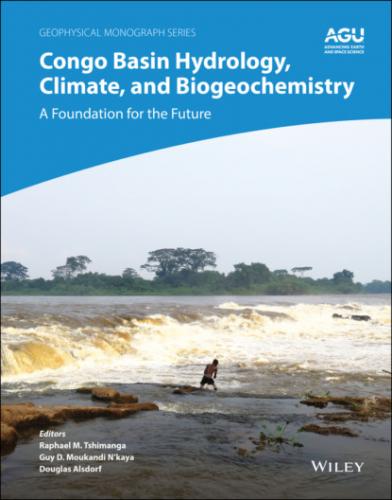Figure 5.3 Spatial distribution of trends in GRACE‐derived TWS (2002–2017) over the Congo basin. Panels (a)–(c) show the linear rates of TWS changes over the study area in the Congo basin delineated by the red line. Panels (d)–(f) show the trend map smoothed with a Gaussian filter using 150 km radius for visualization.
Apart from estimating trends in TWS, the leading orthogonal modes of TWS changes over the Congo basin were also identified to understand the spatial and temporal variability and key hydrological drivers of TWS. Apparently, the first mode of TWS over the Congo Basin is considerably dominated by annual signal and accounts for about 78% of the total variability (Figure 5.5a,b). This leading mode of TWS over the Congo Basin is driven by annual fluctuations in rainfall because of the observed strong correlation (r = 0.81, α = 0.05) between TRMM‐based precipitation and dominant temporal patterns of TWS (Figure 5.5a,b) at three months phase lag. This relationship is further supported by the spatial patterns of TWS (Figure 5.5a,b), which show strong inter‐hemispheric dipole configuration patterns similar to those of spatial distribution of TRMM‐based rainfall. It should be noted that the direct correlation of TWS‐1 with rainfall showed no significant relationship (r = 0.002, p = 0.98) unlike the direct correlation of rainfall with the second mode of GRACE hydrological signal (TWS‐2) (r = 0.52, p = 0.000). The second GRACE‐hydrological signal represents multi‐annual variation in TWS changes (approximately 12% of the total variability) over the northern sections where rainfall is largely bimodal (Figure 5.5c,d). This GRACE‐hydrological signal is moderately associated with rainfall (r = 0.52, p = 0.000); it is largely driven by the strong interannual variations of river discharge and surface water in the Congo Basin (r = 0.88, α = 0.05). The GRACE‐hydrological signal in the third mode, which accounts for 2.7% total TWS variability, represents mostly multi‐annual variations resulting from considerable rise in TWS over the region (Figure 5.5e,f). This signal clearly corresponds to the hydrology of the surrounding East African lakes (Lakes Tanganyika, Edward, and Kivu) though the decline in between 2003 and 2005 in the Congo Basin is also captured (Figure 5.5e,f).
Figure 5.4 Aerial averaged temporal series of TWS (2002–2017) estimated from three different GRACE mascon products. Gaps in the time series are periods with missing data. The TWS time series based on mascon solutions provided by CSR (a), GSFC (b), and JPL (c) within the Congo Basin and their respective linear trends depicted by the dashed lines. The error bars show the respective monthly errors for each solution.
Figure 5.5 Leading modes of TWS (2002–2017) over the Congo basin. Averaged spatial patterns (a, c, and e) corresponds to the temporal series (b, d, and f). The observed correlation value between TWS and surface water storage is significant at α = 0.05.
Climate Influence on Surface Water Hydrology
The response of surface water hydrology to climate variability was evaluated by comparing the leading SPEI temporal series (Figure 5.1a and c) with normalized discharge time series (Congo River discharge). The temporal patterns of standardized runoff index (SRI) and SPEI tend to be consistent except during the drought periods between 1995 and 1999 (Figure 5.6a). SRI indicated positive values (except 1998) contrary to SPEI, which showed drought conditions. The SPEI temporal pattern is poorly correlated with SRI during the 1980–2010 period (r = 0.22 at α = 0.05). But as shown in Figure 5.6a, the temporal relationship between SRI and SPEI are relatively better in some periods. For example, SPEI is better correlated with SRI between 1980 and 1987 (r = 0.46; α = 0.05) and the post‐2000 period (r = 0.46; α = 0.05). A recent assessment of global multi‐scale climate influence on historical drought events over the Congo Basin (Ndehedehe et al., 2019) showed that SRI and SPEI were largely correlated during the 1931–1990 and 1961–1990 (r = 0.69 and 0.64, respectively, at α = 0.05) periods unlike the 1991–2010 period (r = 0.38). While this suggests rainfall
